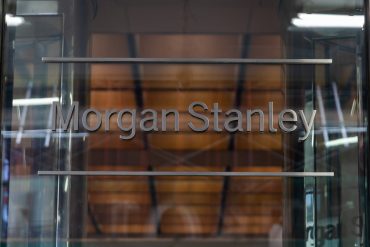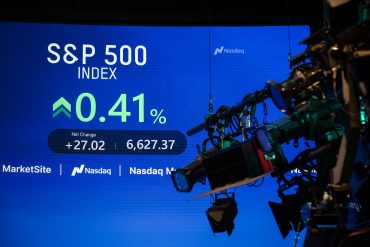

Housing market slowdown intensifies as rising mortgage rates and record prices strain homebuyer affordability nationwide
Three Key Facts
- New home sales plummet 13.7% in May to 623,000 units, falling short of Wall Street expectations of 695,000 and marking the largest monthly decline in recent months.
- Housing inventory reaches three-year high with 507,000 new homes available and a 9.8-month supply, up significantly from 8.3 months in April.
- Mortgage rates hover near 7% throughout May, creating affordability challenges that push existing home sales to their slowest pace since May 2009 at 4.03 million annually.
Introduction
The U.S. housing market faces mounting pressure as new home sales crash to their lowest levels in months, signaling growing strain from elevated mortgage rates and affordability concerns. Sales of new single-family homes dropped 13.7% in May compared with April to 623,000 units on a seasonally-adjusted, annualized basis, according to the U.S. Census.
The sharp decline represents a 6.3% decrease from May 2024 levels and falls considerably below both the six-month average of 671,000 and the annual average of 676,000. These figures also trail the pre-pandemic average from 2019, which stood at 685,000 units sold.
Key Developments
The housing market slowdown extends beyond new construction, with existing-home sales also struggling despite record prices. The National Association of Realtors reports that May 2025 home sales slowed to an annual pace of just 4.03 million, the slowest number for the month since May 2009.
Mortgage rates remained a significant headwind throughout May. The average 30-year fixed mortgage rate moved up from 6.83% at the start of May to just over 7% before settling back at 6.95% by month’s end, as reported by Mortgage News Daily.
According to CNBC, Wall Street analysts had anticipated May’s new home sales to reach 695,000, based on Dow Jones estimates. The actual count, derived from signed contracts, fell well short of these expectations.
Market Impact
The nationwide median sale price for existing homes in May reached $422,800, marking the highest-ever price for the month. New home prices also climbed, with the national median price reaching $426,600, representing a 3% increase from the previous year.
Regional variations show mixed patterns across the country. In May, existing-home sales in the Northeast increased by 4.2% month-over-month to an annual rate of 500,000. The Midwest saw sales rise 2.1% to an annual rate of 990,000. However, the West experienced a 5.4% decline to an annual rate of 700,000, down 6.7% year-over-year.
New York state reflects broader market challenges, with home sales experiencing a 10.9% decline from 8,807 sales in May 2024 to 7,846 homes in May 2025. The inventory of homes rose by 3.6% statewide to 28,810 available units, while median sales prices increased by 3.8% to $436,000.
Strategic Insights
The surge in housing inventory creates a fundamental shift in market dynamics. Supply levels have reached heights not seen since the summer of 2022 following the Federal Reserve’s post-pandemic interest rate hikes and, before that, in 2009 during the subprime mortgage crisis.
Home builders face contrasting strategies in response to market conditions. Some companies are cutting prices to stimulate demand, while others maintain premium pricing despite slower sales. The inventory of unsold existing homes jumped 6.2% from the previous month to 1.54 million at the end of May, representing a 4.6-month supply.
Properties typically stayed on the market for 27 days in May, down from 29 days in April, suggesting that well-priced homes still move quickly despite overall market softness. This dynamic occurs during what should be the peak spring and summer selling season.
Expert Opinions and Data
NAR Chief Economist Lawrence Yun describes the current pace of sales as “sluggish.” He points to affordability and mortgage rates as primary headwinds, noting that lower rates could lure more buyers into the market, potentially raising prices further.
Economist Bradley Saunders from Capital Economics highlights the significance of May’s decline. “The large fall in new home sales in May cancels out all of the positivity of the past couple of months and serves as a valuable reminder that buyer activity can only rise so far with mortgage rates hugging 7%,” he states.
Home builder executives acknowledge the challenging environment. Stuart Miller, co-CEO of Lennar, remarks that “the macro economy remains challenging, as mortgage interest rates have remained higher while consumer confidence has been challenged by a wide range of uncertainties, both domestic and global.”
Despite inventory gains, Lawrence Yun emphasizes that supply constraints persist in key markets. “We are still short on inventory,” he notes, despite gains, particularly addressing states like Texas and Florida where demand remains robust.
Conclusion
The May housing data reveals a market caught between elevated borrowing costs and persistent demand, creating conditions that favor neither buyers nor sellers decisively. With inventory at multi-year highs and mortgage rates expected to remain elevated, the housing market enters a period of adjustment that could extend through the remainder of the peak selling season.
The combination of record prices and reduced transaction volumes suggests a market seeking equilibrium, with regional variations likely to persist as local economic conditions and supply constraints vary significantly across the country.








